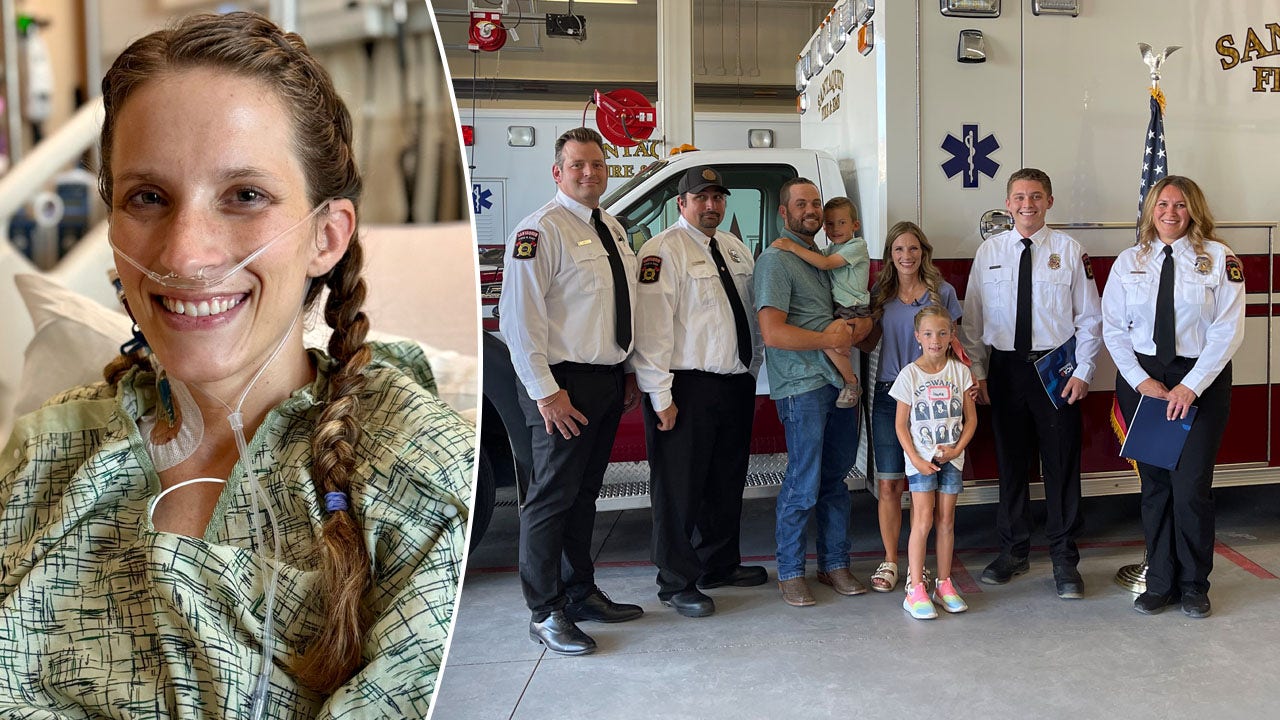Could artificial intelligence predict when your aging loved one will need long-term care?
Approximately 70% of adults aged 65 years and older will require long-term care at some point in their lifetime, statistics show — and the time leading up to that can be fraught with uncertainty.
One California company is looking to change that with its new AI platform called Waterlily.
WHAT IS ARTIFICIAL INTELLIGENCE?
The founder and CEO, Lily Vittayarukskul, started the platform after her own personal struggles with family caregiving.
“I had to navigate long-term care in my family as a teenager and it shaped my view on the importance of preparing for these crises,” she told Fox News Digital.
Some 70% of adults aged 65 years and older will require long-term care at some point in their lifetime, statistics show. (iStock)
“My family was gravely unprepared when my aunt was diagnosed with terminal stage cancer and we were thrown into a long-term care scenario. So I know how difficult the conversations get and just how important it is to hold them as early as possible, before it’s too late and all of their remaining options are unaffordable.”
The experience inspired Vittayarukskul, a former NASA data scientist, to build an AI model to predict a family’s care needs — and help them plan out logistics and financial plans.
How the platform works
The Waterlily AI platform starts by gathering an individual’s demographic, health and financial information through a detailed questionnaire.
“With this data, we use multiple AI models to predict the individual’s unique cost and care trajectory for their long-term care,” said Vittayarukskul.
Waterlily starts by gathering an individual’s demographic, health and financial information through a detailed questionnaire. (Waterlily)
The model predicts the likelihood that an aging senior will need long-term care, what age they’ll be when they need it, how many hours of care they’ll need, what facilities they would likely use — and how much their family is likely to contribute.
“With all of these predictions, we can then create hyper-personalized cost estimates for their long-term care — and then model their current financial plan to see if their self-funding or insurance will meet the costs, and help them model ways to close any remaining gaps,” Vittayarukskul said.
WHY SOME SENIORS SHOULD SIGN ‘DRIVING CONTRACTS’ AND AGREE TO HANG UP THEIR CAR KEYS
“By guiding families through these sensitive conversations with data, we’re helping give concreteness and shape to an otherwise vague risk that many would rather wish away than face head on.”
Answering the big questions
There are some sweeping questions that every family faces when considering long-term care, Vittayarukskul said.
“Where will you age — at home or in a facility? Who in your family will take part in your care? How many hours will be required of them?”
The model predicts the likelihood of an aging senior needing long-term care, what age the person will be when they need it, how many hours of care the individual will need, what facilities they would likely use — and how much their family is likely to step in. (Waterlily)
“What I think is really interesting is the impact of a question that typically isn’t even asked: [At] what age will you need care?” Vittayarukskul said.
“This makes a surprisingly outsized impact on long-term care costs and funding strategies.”
ARTIST HELPS SENIORS CAPTURE PRECIOUS MEMORIES IN WORKS OF ART: ‘THEY BRING THEIR LIFE EXPERIENCES’
Health care costs are expected to grow at a rate of 5.4% per year, according to the Centers for Medicare & Medicaid Services. So while a family may be able to delay taking on long-term care costs, those costs will continue to increase over time.
“Long-term care costs double every 12 years,” Vittayarukskul noted.
“This is why it’s so important to think about how your long-term care funding strategy grows over time, whether that’s through asset investment or an insurance policy with a measure for inflation protection, or another strategy.”
The platform predicts the age at which a senior will need long-term care — enabling families to start planning sooner. (Waterlily)
Waterlily helps address this important question by predicting the age that a user will begin requiring long-term care.
“It can be a difficult number to face, but we’ve seen that looking at the number dead-on actually drives wellness changes and kick-starts important family conversations about the planning process for users,” Vittayarukskul said.
The key is to start the preparation process as early as possible, she advised.
“It doesn’t need to be a perfect plan or cover all of your costs today,” she noted.
“It can be iterative, but it’s so much better to get even 10% of the planning done today and start to make preparations than to wait until it’s too late.”
The app in action
The app is currently available via a waitlist, with more than 100 financial advisers already using Waterlily to build long-term care plans with their clients.
John Sieb, the COO of long-term care at Prudential Financial in Satellite Beach, Florida, used Waterlily as a customer in March 2024. The company is piloting it as a solution for its customers in 2024.
Waterlily also calculates the estimated costs of long-term care for an aging senior. (Waterlily)
“The Waterlily care planning capability is a digital solution that looks at care planning in a holistic and informative manner that uses data and AI, while including family, friends and trusted advisers in the decision-making process,” Sieb said in a statement to Fox News Digital.
“The tool was easy to navigate, presents different scenarios and quickly determines critical next steps,” he went on. “It could be used in multiple life phases — pre-retirement, retirement and receiving care.”
MOST SENIORS IN AMERICA CAN’T AFFORD NURSING HOMES OR ASSISTED LIVING, STUDY FINDS
Dustin Eldridge, founder and managing partner at TEAM Private Wealth Management in Dallas, Texas, said he’s found Waterlily to be a good alternative to using insurance providers to run projections for clients’ potential care needs, which could be time-consuming.
“This required multiple phone calls or emails, from starting the process to obtaining the results,” he said in a statement to Fox News Digital.
The app is currently available via a waitlist, with over 100 financial advisers already using Waterlily to build long-term care plans with their clients. (Waterlily)
“With Waterlily, I can jump on the tool and obtain a projection in less than 10 minutes.As an adviser, this allows me to reduce the time I spend on these tasks, but more importantly, allows me to deliver real-time feedback for my clients.”
Families who are interested in using Waterlily can ask their financial adviser to join the waitlist, or they can join it personally later this year when the company launches direct-to-consumer access.
Benefits vs. risks
While Waterlily presents significant potential benefits, there are some challenges to consider, according to Dr. Harvey Castro, a Dallas, Texas-based board-certified emergency medicine physician and national speaker on AI in health care.
Data and security are an important factor, noted Castro, who was not involved with the platform’s development.
“The handling of personal health data raises significant privacy and security concerns that must be addressed carefully,” he told Fox News Digital.
An AI expert acknowledged that tools like Waterlily are needed amid an aging workforce. By 2050, most Americans will be over 60 years old. (iStock)
The accuracy of the AI predictions also hinges on the quality of the data the model gathers, Castro noted, as any potential biases may pose risks to the quality of the planning.
“It’s also crucial to balance technological predictions with human judgment, ensuring that AI complements rather than replaces human expertise,” the expert added.
Despite the potential risks, Castro acknowledged that tools like Waterlily are needed amid an aging workforce — by 2050, most Americans will be over 60 years old.
“With the current pace, we are facing a significant shortfall in health care providers to meet the needs of this aging population,” Castro said.
CLICK HERE TO SIGN UP FOR OUR HEALTH NEWSLETTER
“AI stands out as a vital solution to these challenges, promising to support a sustainable health care system through more precise care planning and potential automation of care aspects.”
For more Health articles, visit www.foxnews.com/health.
Melissa Rudy is health editor and a member of the lifestyle team at Fox News Digital. Story tips can be sent to melissa.rudy@fox.com.




